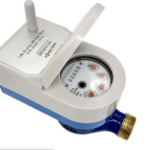 Melexis has introduced the MLX92442 Induxis switch, which offers a contactless and magnet-free monolithic design to directly detect conductive targets, facilitating small module designs with reduced component count for various applications such as high voltage interlocks, charging flaps, seatbelts, hood/trunk, gear tooth sensing, or brake-by-wire systems.
Melexis has introduced the MLX92442 Induxis switch, which offers a contactless and magnet-free monolithic design to directly detect conductive targets, facilitating small module designs with reduced component count for various applications such as high voltage interlocks, charging flaps, seatbelts, hood/trunk, gear tooth sensing, or brake-by-wire systems.Traditional safety automotive latches and switches typically rely on mechanical contacts or magnetic switches like push buttons, reed switches, or hall effect sensors. However, these solutions often require modifications to the safety target’s design, adding magnets or physical protrusions for actuation.
Melexis’ induction solution eliminates the need for such modifications. Actively sensing the conductive safety target without magnets or button actuators, it offers several advantages. With no moving parts, reliability and safety are improved, as the direct sensing operation isn’t dependent on parts attached to the safety element that could be damaged or displaced. Additionally, the solution reduces the bill of materials (BOM) and offers inherent reliability compared to mechanical solutions, while also being immune to magnetic interference.
At the heart of the MLX92442 is its highly integrated and miniaturized standard packaging, which integrates coils and interfaces within the chip, eliminating the need for bulky PCB and coil solutions. Available in through-hole VK packaging or surface-mount SOIC packaging, it reduces the supporting BOM from 3 to 2 elements compared to existing solutions, contributing to a more sustainable and safer design.
The MLX92442 ensures continued and reliable operation with features such as reverse supply voltage, under-voltage, and thermal protection, along with an advanced integrated self-diagnostic function with a dedicated safe mode.
In addition to reducing the BOM component count, Melexis’ inductive solution streamlines development time by supporting both factory and end-of-line programming. Assembly design is simplified due to the standard packaging and absence of magnets, allowing for easier system integration and streamlining the supply chain. This simplicity also aids in maintaining mechanical tolerances in assemblies, as only the inductive sensor and conductive safety element need consideration within air gaps up to 1.5 mm.
With industry-standard interfaces, wide operating voltage, wide temperature range, and ISO26262 ASIL A compliance, the MLX92442 offers a highly reliable option for safety-critical applications, with minimal design requirements, alongside Hall effect and mechanical solutions
Melexis has introduced the MLX92442 Induxis switch, which offers a contactless and magnet-free monolithic design to directly detect conductive targets, facilitating small module designs with reduced component count for various applications such as high voltage interlocks, charging flaps, seatbelts, hood/trunk, gear tooth sensing, or brake-by-wire systems.
Traditional safety automotive latches and switches typically rely on mechanical contacts or magnetic switches like push buttons, reed switches, or hall effect sensors. However, these solutions often require modifications to the safety target’s design, adding magnets or physical protrusions for actuation.
Melexis’ induction solution eliminates the need for such modifications. By actively sensing the conductive safety target without magnets or button actuators, it offers several advantages. With no moving parts, reliability and safety are improved, as the direct sensing operation isn’t dependent on parts attached to the safety element that could be damaged or displaced. Additionally, the solution reduces the bill of materials (BOM) and offers inherent reliability compared to mechanical solutions, while also being immune to magnetic interference.
At the heart of the MLX92442 is its highly integrated and miniaturized standard packaging, which integrates coils and interfaces within the chip, eliminating the need for bulky PCB and coil solutions. Available in through-hole VK packaging or surface-mount SOIC packaging, it reduces the supporting BOM from 3 to 2 elements compared to existing solutions, contributing to a more sustainable and safer design.
The MLX92442 ensures continued and reliable operation with features such as reverse supply voltage, under-voltage, and thermal protection, along with an advanced integrated self-diagnostic function with a dedicated safe mode.
In addition to reducing the BOM component count, Melexis’ inductive solution streamlines development time by supporting both factory and end-of-line programming. Assembly design is simplified due to the standard packaging and absence of magnets, allowing for easier system integration and streamlining the supply chain. This simplicity also aids in maintaining mechanical tolerances in assemblies, as only the inductive sensor and conductive safety element need consideration within air gaps up to 1.5 mm.
With industry-standard interfaces, wide operating voltage, wide temperature range, and ISO26262 ASIL A compliance, the MLX92442 offers a highly reliable option for safety-critical applications, with minimal design requirements, alongside Hall effect and mechanical solutions.
You may also like:
Filed Under: Automotive, News, PCB design, Products







Questions related to this article?
👉Ask and discuss on Electro-Tech-Online.com and EDAboard.com forums.
Tell Us What You Think!!
You must be logged in to post a comment.